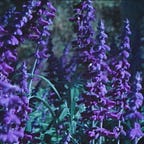VII. Notes From My Mind’s Eye
Principles Of Art & Design : Pattern
There’s Beauty In Repetition. And That’s Part Of My Culture and African Culture As Well : Repeated Things, Mantra. It’s Spiritual, It’s Meditation, It’s Buddhism, It’s Praying, It’s All These Things. — Robert Glasper
Pattern| Visual
The visual language of photography, design principles are concepts used to categorize the arrangement of lines, shapes, colors, and space. Pattern is a repeated combination of structural elements that form a decorative design. The way each principle applies structural elements affect the overall meaning of a work of art. Pattern is the first principle we will discuss so that we can better understand our next two concepts, ‘unity and variety’ and rhythm.
Omar Victor — Diop | 1980 — present
Residing in Dakar, Omar Victor — Diop is an artist with an evidenced love for fashion. Accompanied by his beautiful confrontation of the issues of immigration, integration and acceptance, it is hard not to admire how he makes black identity metaphorically central using patterns and repetition.
It Is Not Our Differences That Divide Us. It Is Our Inability To Recognize, Accept, And Celebrate Those Differences. — Audre Lorde
Project Diaspora : A Moroccan Man, 1913
The first image we take a look at utilizes pattern in both its foreground and background which strategically contrasts anything that is not patterned. In this regard, our strikingly different feature within this image is our subject, Omar Victor — Diop. The degree of difference between the patterns of the subjects face, hand, soccer ball, background and foreground enhances our attention to those differences. With such emphasis on the subject, it really makes you curious about the title’s reference.
Liberty : Thiaroye, 1944
Juxtapose to the image we just took a look at, Victor — Diop conveys pattern in a starkly different way. Instead of repetition on fabric, it is executed through the positioning of bodies. Framing the colors and attires on the black bodies with repetitive flowers helps us to see the layers of similarities within this piece. Additionally, this highlights made by the use of light emphasis the subject of focus as everything else falls into darkness.
Studio Of Vanity : Aminata Faye
Similar patterns in the foreground and background are differentiated from one another using color. Making the subject “pop” in a sense, we observe the whole of the subject instead of in part. This helps us to see the details that would be otherwise hidden if the patterns were the same color. So in this sense, pattern distinguishes the details needed to be seen in a whole.
(Re — ) Mixing Hollywood : American Beauty
Nature elements used as patterns contrasted with the natural essence of the body. The aerial perspective lends it self the insinuated meaning. With majority of the image engulfed in leaves, the woman is seemingly only part of the whole instead of an entirely separate whole. Which helps us to see the entire image as a unified pattern with harmonious areas of variation.
Pattern | Storytelling
Pattern is a combination of structural elements used to form repetition. Useful in binding balanced compositions of elemental assortments, Omar Victor — Diop elevates this advantage by stretching pattern’s ability to reveal stories. It is in the many photographic series that we are challenged to explore meaning outside of our previous understandings of history. Black histories previously untold, unpopular, and uncelebrated are what we confront by viewing Project Diaspora, Liberty, Studio Of Vanity, and Re-Mixing Hollywood. A seemingly unrestricted way of storytelling with no loo0ming expectation. Victor — Diop’s artistic independence grant us a discussion of an array of topics pertaining to the black body which forces us to recon with our global colonial past and its impact on the African Diaspora. This a history of exploitative systems who justified and continue to justify the deprivation of fundamental freedoms in exchange for riches. All of which are actively addressed. Recalling, restoring, preserving, and celebrating the moments in time that make up our collective quest for freedom as an African Diaspora. Project Diaspora’s A Moroccan Man, 1913 preserves the heritage of historical characters by bring them into current conversations about the African diaspora. Liberty’s Thiaroye, 1944 recalls the massacre of Black African soldiers of the French Free Army slaughtered by the hands of their fellow white soldiers all because they wanted equal pay. Studio Of Vanity’s Aminata Faye celebrates the new generation of urban Africa. Re-Mixing Hollywood’s American Beauty restores African culture into the realm of popular culture. Subsequently, Omar Victor — Diop exemplifies how pattern is useful for both aesthetics and symbolism within storytelling. As we progress understanding of design principles, we will continue to see why symbolism is an integral part to the storytelling process for all artist. When we shoot with intention, we tell stories often left unheard. This is Conceptual art at its finest.
Until Next Time,
Be A Storyteller, Share Experiences, & Challenge Norms | Shoot With Intention
In The Comment Section Below | How do you interpret patterns within Omar Victor Diop’s Joel Adama Gueye portrait?
Check Out Previous Articles About The Visual Elements of Art
